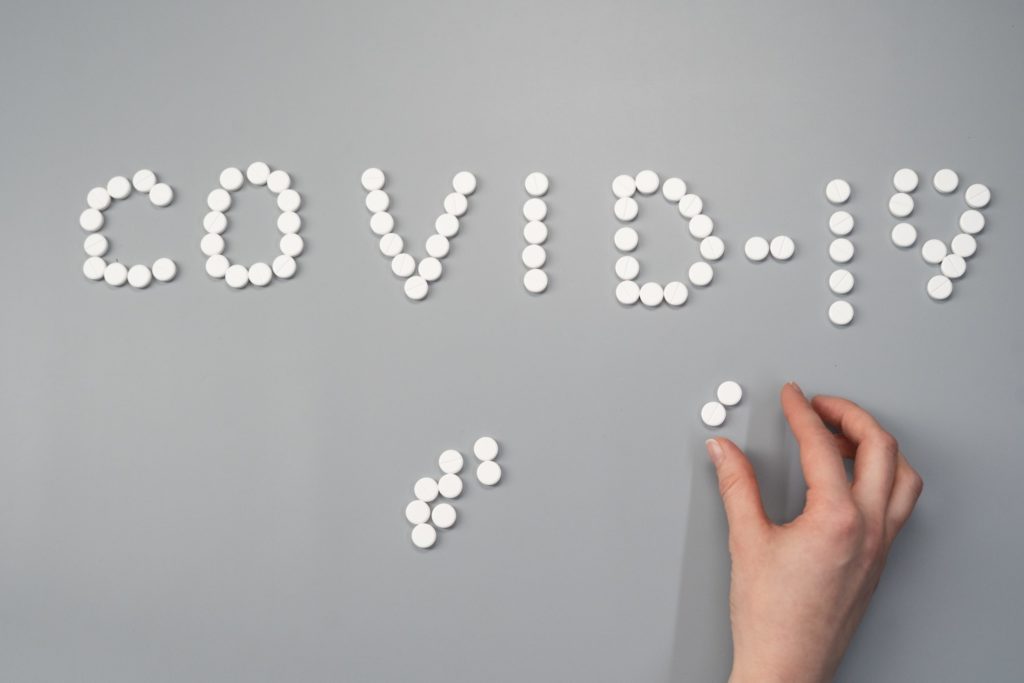In this multi-part series, we’ll step back from the flood of day-to-day pandemic news, and put our attention back on the big questions. This series will be divided into three major parts: disease biology, therapies, and the progress of the pandemic. We’ll close by discussing the future. This first post is about disease biology.
When the world first realized in December that an outbreak of a new disease had begun in Wuhan, the pathogen’s properties were a complete mystery. A novel coronavirus was not confirmed as the cause of the disease until early January, and basic epidemiological properties of the virus were in significant doubt until well into February.
In this overview, we’ll lay out the current state of our understanding of the SARS-CoV-2 virus and the disease that it causes (COVID-19). Everything in this overview is, of course, subject to change with new information. We’ve been periodically surprised by new findings, and there are probably still more surprises in store for us. But in general, the science behind much of our understanding of the disease’s biology has stabilized a great deal since January.
Contagiousness
SARS-CoV-2 is very contagious. While estimates of R0 initially spanned a range from about 2 all the way to about 6, recent estimates of R0 in the urban environment seem to have been clustering at about 3-5, putting SARS-CoV-2 above the flu and SARS in infectiousness, but nowhere near the peak occupied by measles.
The high R0 value is significant not only because it makes the disease harder to contain, but because it raises the threshold for herd immunity, whether attained by infection or vaccination.
In broad, idealized terms, we can estimate that a disease with an R0 value of 2 requires only 50% immunity to attain herd immunity against large outbreaks, while an R0 value of 5 requires 80% immunity. While the peculiars of a real-world population may alter these values somewhat, it doesn’t change the basic fact that a higher R0 means more immunity is needed to contain outbreaks.
Estimates of the serial interval have converged around five to six days on average, about the same as the average length of the incubation period.
Fittingly, about half of COVID-19 infections appear to come from asymptomatic and presymptomatic transmission, and possibly as much as 75%. Most of these appear to be presymptomatic.
Among these transmissions, it appears that the dispersion constant is higher than originally suspected, with superspreader incidents making up a significant portion of the spread of COVID-19. Superspreader incidents in various places, like a Wuhan hospital, a Biogen conference, a Korean church, a spring break party, a church choir, etc., etc., have filled the news. It’s still not entirely clear which factors drive these events: the viral load, the behavior of the infected, the environment, or other factors. Some estimates now suggest that 80% of the spread of COVID-19 comes from only 20% of the cases, meaning that large increases in the size of outbreaks may be driven mainly by superspreaders. This has the effect of making outbreaks less predictable. Those which happen to produce a cluster of superspreaders can explode, while others can plod along without such rapid growth due to luck.
SARS-CoV-2 is able to spread by a bewildering variety of mechanisms, including exotic methods like from surfaces, food, aerosols that can remain in the air for a prolonged period after people leave the relevant areas, from skin contact, and through poop. However, while it has been confirmed that these exotic methods are capable of spreading SARS-CoV-2, this doesn’t appear to happen very often. The bulk of spread appears to come from people synchronously sharing the same air spaces in relatively close contact, mostly indoors, and especially while they are breathing heavily, talking, singing, sneezing, and coughing. This appears to be the main mechanism of spread.
It’s also clear by this point that face masks help to reduce spread significantly. Cloth masks help, surgical masks help, and fitted filter masks help even more.
Severity and lethality
For the patient, COVID-19 ranges from a walk in the park to a nightmarish illness with debilitating long term responses and a high risk of death. While estimates of asymptomatic cases range widely, from about 20% to 80% of those infected, it’s clear they’re a significant number.
For those who have symptoms, many get only a mild fever and cough. But a significant fraction, about 20%, need hospitalization. Those who are hospitalized often remain sick for about a month (though some cases last much longer), and have serious symptoms all over the body, like trouble breathing, hypoxia, kidney failure, skin conditions, systemic inflammation, viral attack on internal organs, and other effects.
SARS-CoV-2 is moderately deadly. While calculating fatality rates is complicated, high quality studies are confidently bracketing the rates of death from COVID-19 within a reasonable range. Case fatality rates (CFRs) appear to sit between about 2% and 15% in cohorts of different ages and ascertainment levels.
(Note: “Ascertainment level” is a technical term for how many of the actually existing infections are caught by testing. “High ascertainment” means we’re catching most of the infections by testing, and “low ascertainment” means most of the infections are happening off-the-radar because those people aren’t being tested for whatever reason.)
Infection fatality rates (IFRs) account for un-ascertained cases by deriving their infection estimates from serostudies. Early results in harder hit regions have estimated the IFR as significantly lower, around 1% in a population with an age distribution typical of developed countries. This is roughly in line with the estimates which had been published prior to this.
The risk of death is not uniform. As we’ve discussed before, older people are at much higher risk of death. There are also certain comorbidities—like cancer, COPD, diabetes, and hypertension—which increase the risk. This means that older and more comorbid populations are likely to have higher IFRs, and developing countries with younger populations may have significantly lower IFRs.
It’s important to keep in mind that these estimates still leave room for terrible scenarios to evolve. For example, the widely-circulated estimate of 2.2 million deaths in the USA in the event of a nationwide Big Burn is still quite supportable in light of the latest figures.
And the combination of (e.g.) an R0 of 4 and a serial interval of 6 days means that uncontrolled, one case of COVID-19 can turn into a million cases in sixty days. An extremely deadly outbreak could happen anywhere, with relatively little notice, if we stop taking this seriously.
Long term effects, immunity, and mutation
After recovery, many patients have significantly reduced lung capacity, possibly for life. Doctors are also beginning to document a variety of other longer-term effects, including a multi-organ inflammatory syndrome in children that is sometimes fatal. Another notable long term effect in some patients is a potentially permanent loss of the sense of taste and smell.
Ultimately, we still don’t really understand the long term effects of COVID-19, but the picture we do have shows meaningful risk of long-term (possibly even permanent) damage even in cases categorized as “mild.”
As for the question of long-term immunity to the virus — either after an infection or via a vaccine — the picture has gotten brighter with time and study. The best current literature suggests that infection does indeed produce a neutralizing antibody response almost universally, and that chronic infection and reinfection are vanishingly rare, if they exist at all. Initial studies suggesting lower rates of seroconversion have been overturned by higher quality results, and studies showing PCR positivity of recovered COVID-19 patients have been confirmed as artifacts of dead viruses, not live viable viruses.
What remains significantly less certain is how long antibody-based immunity will last. Some results have suggested that SARS antibody responses are reduced after three years and mostly gone by 6 years, but memory T-cell response remains, and it’s unclear both what this would mean for immunity and how it would translate for how lasting SARS-CoV-2 responses will be. Even if they prove immune, as is now expected, survivors’ immunity may fade over longer periods, enabling reinfection.
A related issue is the are SARS-CoV-2 mutations. In theory, mutations could emerge with a variety of significant clinical characteristics, like greater or lesser contagiousness and fatality, or a change that could allow recovered patients to be infected again with a new strain. Luckily, the native mutation rate of coronaviruses appears to be lower than that of e.g., flu viruses. The GISAID database, which now contains tens of thousands of SARS-CoV-2 genomes, confirms this is also true of SARS-CoV-2. There are so far no known clinically significant variants on SARS-CoV-2, although this could change.
Seasonality
In the early stages of the pandemic, as cases exploded in urban China in the winter, there was hope that COVID-19 would be easier to control in warmer climates and during the summer. We know that SARS-CoV-2 persistence on surfaces does have a temperature and humidity sensitivity, but this doesn’t always translate into a clinically significant seasonality. Some respiratory viruses have this property, including cold coronaviruses, the seasonal flu, and SARS-CoV, but we haven’t yet answered this question definitively for SARS-CoV-2. Despite this, and despite some results from China suggesting that there may even be an inverse seasonality, a lot of people are hoping COVID-19 won’t spread in warm weather.
Seasonal effects are easier to observe when they reduce the R value of a viral disease enough to get it below one. In such a case, as in the case of the seasonal flu, seasonality would be so strong that it produces suppression of the epidemic in the summer all by itself.
In the case of COVID-19, though, enough evidence has been accumulated to show this isn’t the case. It has spread significantly in both wet and dry parts of the tropics, and in hot parts of the United States during May and June. Tropical countries like Brazil, Mexico, and Ecuador are now on the list of countries with the worst COVID-19 fatalities per capita. So, if SARS-CoV-2 does exhibit seasonality, it’s not strong enough to push R across this threshold all by itself. This may be because R0 is a lot higher for SARS-CoV-2 than for other seasonal respiratory diseases.
Right now, the kind of epidemiology that would be needed to detect a small seasonality effect hasn’t emerged yet. We don’t know if the countries which are controlling their local epidemics are benefiting from a spring tailwind and will suffer more in the winter, or if seasonality isn’t that important and these countries are beating the epidemic on their own, and winter will carry no special risks.
But we do know that seasonality by itself will not solve our problems. Though it is possible that it may work in combination with other interventions, like mask wearing and social distancing, to give us a little help pushing down R.


You are reporting the comment """ by on